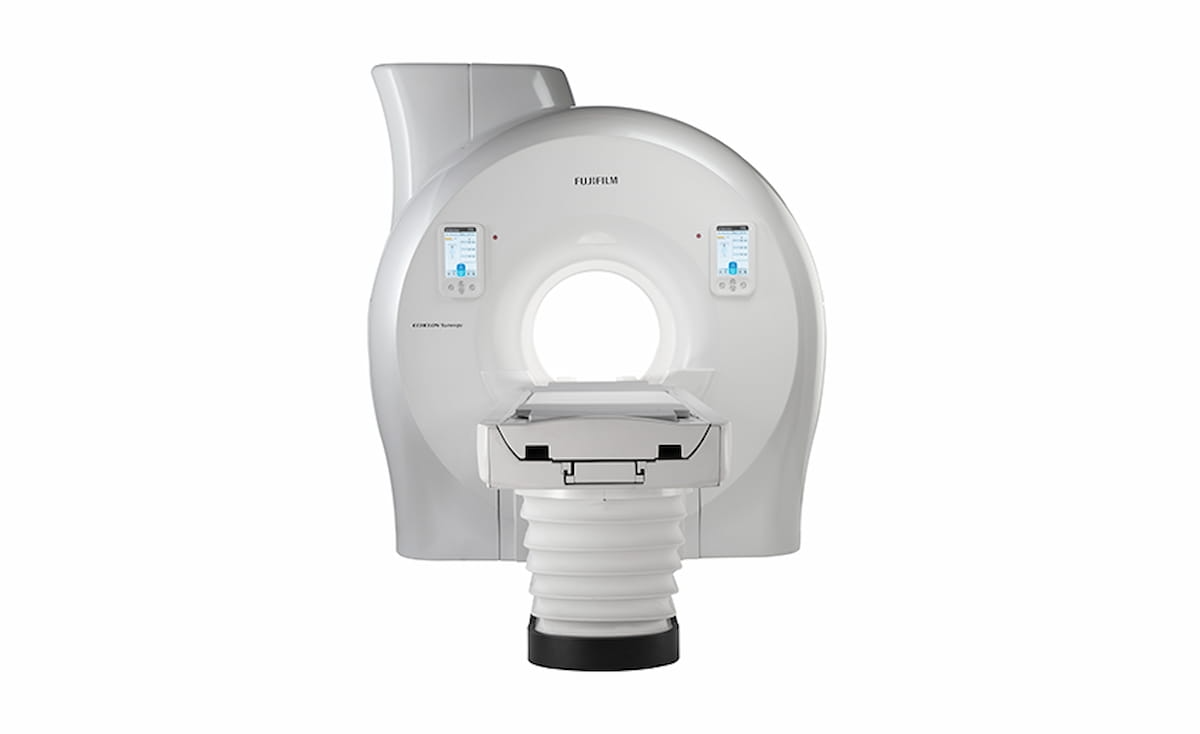Artifact Reduction Drives Technology Advances with Updated Version of Echelon Synergy MRI System
Emerging technologies included with the 10th version of the 1.5T MRI platform include Synergy DLR Clear and Synergy Vision that are geared toward mitigating common challenges with artifacts.
Fujifilm Healthcare has made artifact reduction a key focus of advances with the newly launched 10th version of the Echelon Synergy 1.5T magnetic resonance imaging (MRI) system.
Offering multiple in-bore cameras and the use of real-time tracking from scans to correct motion-compromised raw data, the updated Echelon Synergy device’s combination of Synergy Vision and StillShot artificial intelligence (AI) mitigates motion artifacts, according to Fujifilm Healthcare.
Mitigating artifacts is a key driver of new technological advances included in version 10 of the Echelon Synergy 1.5T MRI system. (Image courtesy of Fujifilm Healthcare.)

The company added that the Echelon Synergy’s inclusion of the AI-powered algorithm DLR Clear addresses the challenging truncation artifact without the need for extended scan time.
“With the v10 (Echelon Synergy), technologists can now apply our RADAR radial sequence with our iterative iRCM IP-Recon processing to mitigate spike artifacts, resulting in clear, high-quality images with reduced motion artifact,” noted Shawn Etheridge, the executive director of modality solutions for Fujifilm Healthcare Americas Corporation.
Fujifilm noted that the upgraded standard software features with version 10 of the Echelon Synergy 1.5T MRI will be provided to current customers free of charge.
Considering Breast- and Lesion-Level Assessments with Mammography AI: What New Research Reveals
June 27th 2025While there was a decline of AUC for mammography AI software from breast-level assessments to lesion-level evaluation, the authors of a new study, involving 1,200 women, found that AI offered over a seven percent higher AUC for lesion-level interpretation in comparison to unassisted expert readers.
Can CT-Based Deep Learning Bolster Prognostic Assessments of Ground-Glass Nodules?
June 19th 2025Emerging research shows that a multiple time-series deep learning model assessment of CT images provides 20 percent higher sensitivity than a delta radiomic model and 56 percent higher sensitivity than a clinical model for prognostic evaluation of ground-glass nodules.
FDA Clears Ultrasound AI Detection for Pleural Effusion and Consolidation
June 18th 2025The 14th FDA-cleared AI software embedded in the Exo Iris ultrasound device reportedly enables automated detection of key pulmonary findings that may facilitate detection of pneumonia and tuberculosis in seconds.